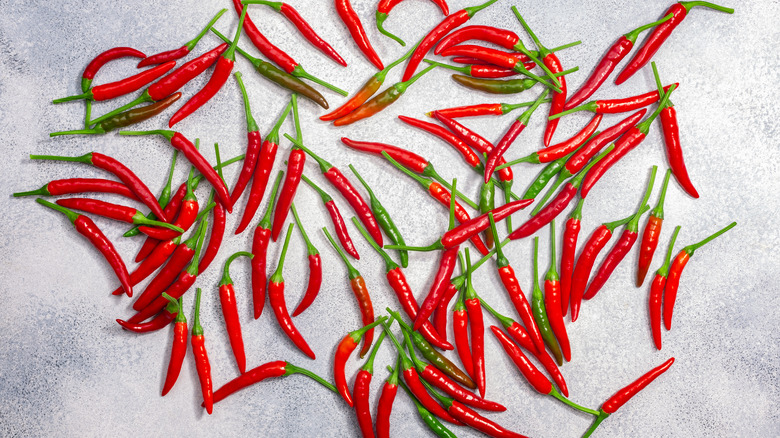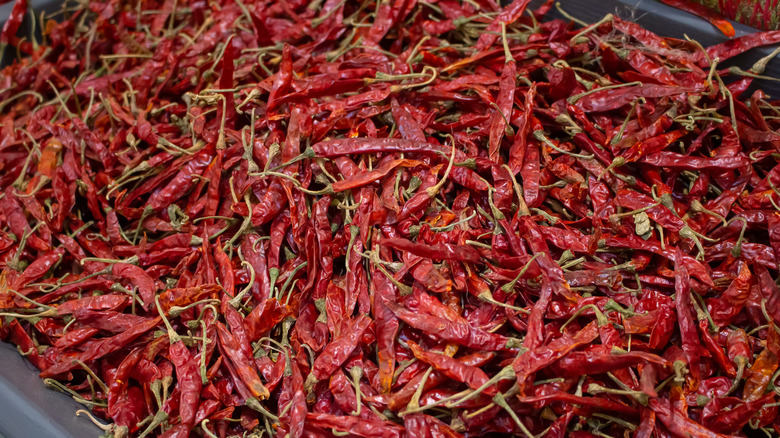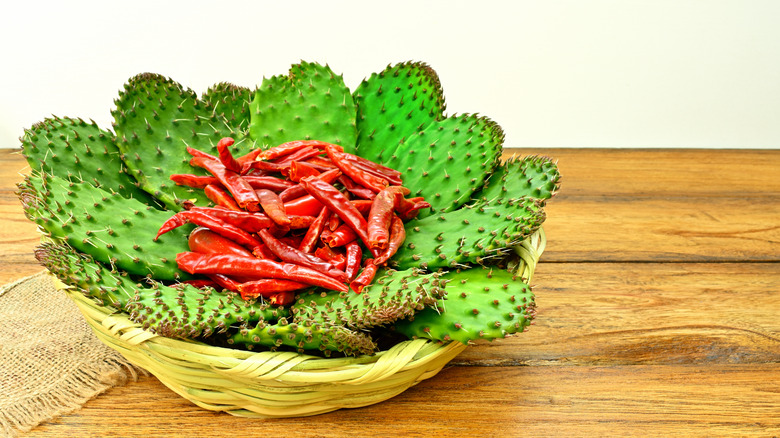Just How Spicy Are Chile De árbol Peppers?
If you're familiar with chile de árbol, you know that they just look hot. These bright red, lanky peppers are used in some of the world's hottest hot sauce recipes, but think of them as a supporting player. Chile de árbol — sometimes called bird's beak or rat tail chiles — are pretty dang hot, but maybe not as intense as you might think by the look of them. They're definitely hotter than a jalapeño but are closer in spicy intensity to their sibling: the cayenne pepper.
You can use chile de árbol dried or fresh, and they both pack quite a punch. There's a time and place to feature these little devils, but when used correctly, they can deliver a satisfying spicy kick with just a touch of woody smokiness. These chiles aren't super flavorful on their own beyond their spice (unlike the distinct, fruity flavor of habanero), though chile de árbol is the ultimate flavor enhancer to any dish you want to add some heat to.
Scoville score
To get more specific about the heat in chile de árbol, we look at the Scoville scale. (If you're unfamiliar with the Scoville rating, it's essentially a numeric grade given to the spectrum of heat — or, more scientifically, the level of capsaicin found in peppers.) The scale measures the mildest — bell peppers — with zero Scoville rating, progressing all the way to the hottest-of-hot Carolina Reaper with a seven-figure Scoville rating.
To give you some perspective, the average jalapeño rates anywhere between 2,500 to 8,000 Scoville heat units (SHU). Chile de árbol ranges from 15,000 to 30,000 SHU — meaning it's no joke, but probably won't cause you any distress. Cayenne peppers are comparable (if not slightly hotter) on average to chile de árbol, with a range of 30,000 to 50,000 SHU. But it's important to know that all humans have different senses of heat, and while a Scoville measurement is helpful for reference, what is deathly spicy to one may be quite mild to another.
It burns
While chile de árbol isn't the hottest of peppers lying around your local grocery's produce section, they're still hot and they still contain capsaicin. This substance can be incredibly irritating to the skin and absolutely devastating to the eyes, so it's important to take the necessary precautions when handling any kind of chile. You should wear food-grade nitrile gloves when prepping hot chiles, but if you have none to hand (pun intended) and find yourself with chile oil-covered phalanges, try using olive oil or the tried-and-true baking soda hack to get the burn out and thank us later.
Chile de árbol are beautiful — like, literally: People make wreaths of them and hang them about the house. So, if you try them and find you don't want to eat them, you can always make decor. But in all seriousness, change up your pepper game and give them a try. The next time you bust out a recipe calling for cayenne, give the bird's beak a whirl and see how it strikes you. It might just be your new kick.


